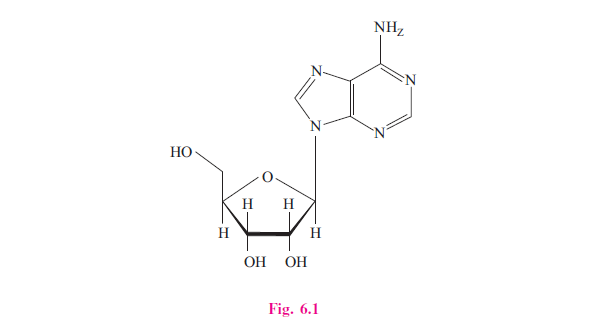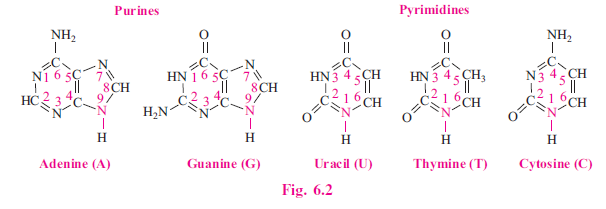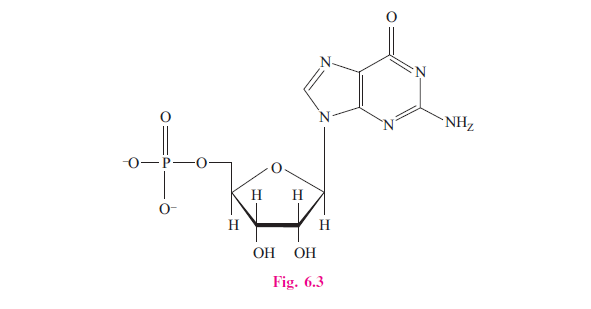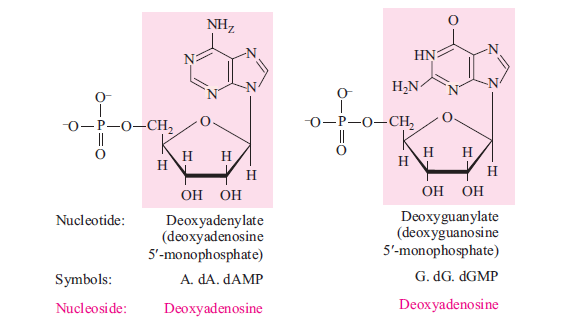Structure And Chemistry Of Nucleic Acids
In all living organisms the amino acid sequence of every protein and the nucleotide sequence of every RNA, is specified by a nucleotide sequence in the cell’s DNA. Segment of DNA molecule that encodes a protein or RNA, is referred to as a gene.
Chemistry of nucleic acid
Nucleotides are organic compounds that are monomeric units of nucleic acids,they are of different types and structures and have variety of physiological functions. Nucleic acids are responsible for storage and transmission of genetic information. Nucleic acids are chemically composed of polymers of nucleotides joined together by phosphodiester linkages (bonds). Nucleic acids are broadly divided into two major types; Ribonucleic acid (RNA) which is single stranded containing Adenine (A), Uracil (U), Cytosine (C) and Guanine (G) ribonucleotides and deoxyribonucleic acid which is double stranded containing Adenine, Thymine (T), Cytosine and Guanine deoxyribonucleotides.
Nucleosides
The nitrogenous bases and pentose sugars associated structure gives a compound called nucleoside. Based on the type of nitrogenous base and the types of sugar it is liked to, different types of nucleotides are formed each having its own characteristic and structure.

Purines and pyrimidines are the components of nitrogenous bases. The purine bases contains the purine ring (double ringsystem) while the pyrimidine base contain pyrimidine ring (single ring structure). The purine bases include Adenine and Guanine. The unusual forms of purines are hypoxathine, 1 methylguanine, 1 methylhypoxanthine etc. While the pyrimidine includes cytosine, thymine anduracil and its unusual forms are 5-methylcytosine, Thiouracil etc.

In nucleosides, nitrogenous bases are joined to pentose sugar through the hemiacetal hydroxyl group on the C-1 (first carbon atom of the sugar). The purines are attached to the sugar through the N-9 nitrogen atom while pyrimidine are attached through the N-1 nitrogen atom.
Nucleotides
Nucleotides are phosphoric acid esters of nucleosides. Nucleotides contain nitrogenous bases, sugars and phosphoric acids in ester linkage. The nitrogenous base, presentin nucleotides are purines: Adenine and Guanine; pyrimidines: Cytosine,Thymine and Uracil. The uracil can only be found in ribonucleotides while thymine base can only be found in deoxyribonucleotides. The sugar in nucleotides is the pentose sugar which could be ribose and deoxyribose. Sugar are esterified to a phosphoric acid residue at positions (2, 3 or 5) in ribose and (3 or 5) in the deoxyribose where the ester bonds could be formed. In addition, the nucleotides could be in form of mono,di and triphosphates.



Compound that have their structures derived from nucleotide structures are called as nucleotide derivatives. They share close structural features of nucleotides. Nicotinamide Adenine dinucleotide (NAD), Nicotinamide Adenine dinucleotide phosphate (NADP), flavine adeninedinucleotide (FAD) are some of the examples for nucleotide derivatives.
Intext Questions
1. Segment of DNA molecule that encodes a protein is called as …………….
(a) RNA (b) gene (c) interon (d) operon
2. Nucleotides are organic compounds that are monomeric units of …………….
3. The nitrogenous bases and ……………. associated structure gives a compound called nucleoside .
4. ……………. are phosphoric acid esters of nucleosides
